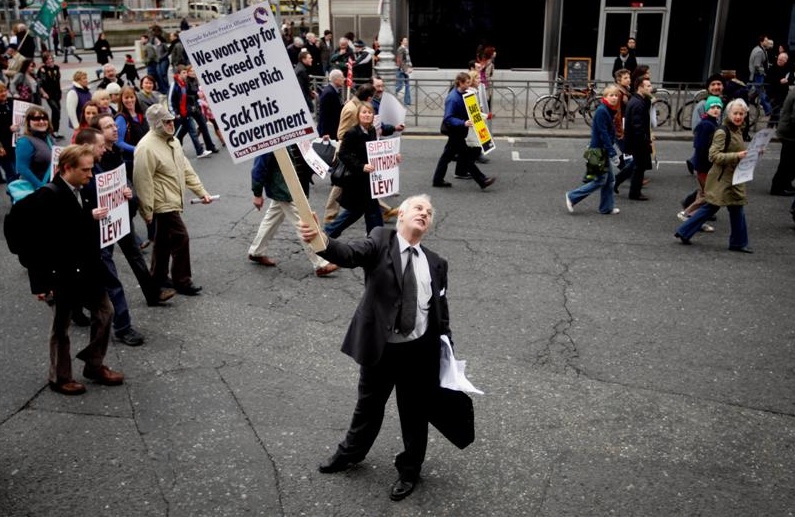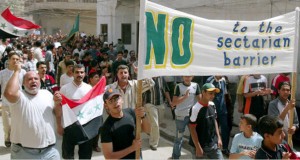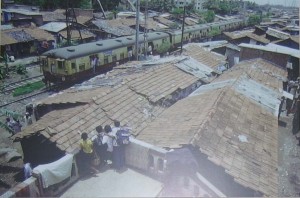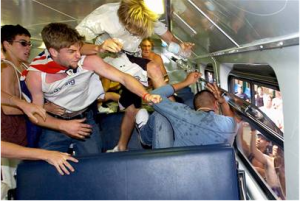Open Cities 1 Setting the Scene
Open Cities 1
Setting the Scene
Why open cities? The aim of the Open Cities project initiated by the British Council in Madrid is to create and sustain open cities.http://opencities.britishcouncil.org/web/index.php?home_enIn 2008, the first Open Cities conference held by the British Council in Madrid identified the characteristics of open cities. Subsequently the eight participant cities bid successfully for an URBACT grant. The twelve cities forming part of this URBACT project were expecting to transform principles of ‘openness’ into everyday good practice. Under URBACT, the project transformed itself into “Openness and the Competitive Advantage of Diversity”.http://urbact.eu/en/projects/human-capital-entrepreneurship/open-cities/our-project/
As I see it, my role as an ‘official blogger’ of the Open Cities project, initiated by the British Council and now under the aegis of URBACT is two-fold:
- to shed light on the meaning of ‘city openness’ by putting this desirable aim into the wider context of pressing world issues
- to approach the concept of ‘open city’ from my particular standpoint as a built environment professional. This means examining the relationship between the city as a physical setting and its use by a diverse society to understand the nature of open cities and their capacity to foster interaction and harness diversity to the competitive advantage of cities.
The space on the Open Cities website of the British Council is limited. For that reason I am posting my posts on the Urban Thinker website with all the images which are needed to accompany and illustrate the writing.
In this first post I wish to deal with the wider context of open cities.

Dia 1 The Urban Condition
Wider context
At the forefront of public consciousness are
- the economic crisis
- quality of the environment
- anti-social behaviour
with their sub-sets:
- global competitiveness, jobs, protectionism, immigration;
- climate change, incidences, health and safety, scarcity of resources
- crime, fear of crime, terrorism, inequality and poverty;
and above all governance to remedy socio-economic and environmental ills.
Economic crisis
Global financial activities have been the major cause of the current recession. They are concentrated in world cities as Saskia Sassen demonstrates in her research [Saskia Sassen. 2006. Why cities matter. In: Cities, Architecture and Society. 2006. 10th international Biennale of Architecture. Marsilio]. Concentration of wealth and high earnings widens the gap between rich and poor, increasing social tensions, and often leading to physical segregation.

Dia 2 Economic plunge
Gated communities are a very visible manifestation of such spatial segregation which tends to exacerbate social segregation, as amenities in places deserted by those who take refuge in gated communities may deteriorate or getting lost altogether. The decline of physical infrastructure, public services and safe open spaces may curtail accessibility to amenities, jobs and quality of life in these areas. Such physical transformation may well undermine openness in the hearts and minds of the population left behind, as well as among those who took refuge behind their real, as well as symbolic walls.

Dia 3 Anti-sleeze demonstration
The point is that the physical setting affects the relative chances people have in coping with economic recession. If it contributes to loss of openness it can damage social cohesion which, in turn can have an adverse effect on the economic success of a city.

Dia 4 Anti-segregation protest
Climate change
Cities contribute substantially to global warming. The use of the building stock and driving cars alone make up some 40% of CO2 emissions, while the ecological footprints of cities far exceed their territory. [ActOn CO2 website. Climate change, what’s stopping you? I can’t possibly make a difference]

Dia 6 Storm
Anti-social behaviour
Social conflicts tend to manifest their worst excesses in cities where attacks on people and property in dense areas can create maximum damage. Initiated by minority groups, terrorist attacks inflame divisive standpoints and alienate law abiding majorities. They can contribute to the retrenchment of conflicting factions into segregated spaces, thwart civic debate, and thus curb openness.

Dia 7 Deprivation as antisocial trigger? From Tate Modern Cities exhibition 2007
Continuous dialogue and negotiated agreements on mutual tolerance may be easier to reach during economic growth while their robustness may wane in times of hardship. The recent attacks in Belfast may possibly had a lesser chance of occurring during the previous period of economic buoyancy. Conflict seems to emerge into in the open more easily during times of hardship.

Dia 8 Race riots
These short statements aim to indicate the role of cities in three major preoccupations of societies worldwide. Further examples are explored in future posts and should help to illustrate how the degree and nature of openness of cities can affect their ability to cope with these challenges.
End
